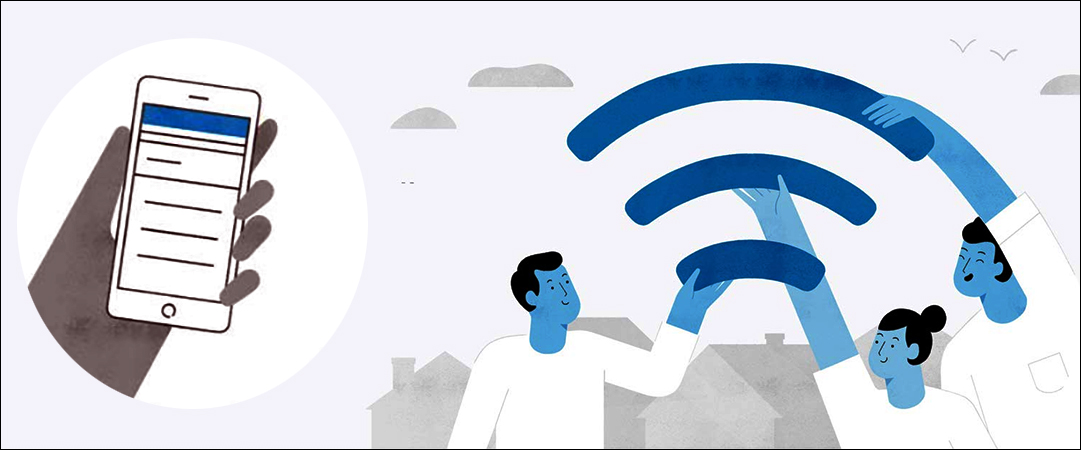Device manufacturers and solution providers are building new products and applications leveraging LoRa technology for the Amazon Sidewalk network. Amazon has partnered with Internet of Things (IoT) semiconductor technology company Semtech, which is enabling LoRa-based IoT functionality for users of Amazon’s recently released network, aimed at extending wireless coverage outdoors. The crowd-sourced Sidewalk wireless mesh network is designed to expand the range of indoor networks, such as those centered around the Amazon Echo device. Users could connect new, wider-ranging devices to the network, whether they involve indoor or outdoor products.

Outdoor products that could be connected to the network might initially include smart lighting, pet trackers, asset-tracking sensors and smart irrigation, Semtech reports. While devices indoors can use existing Wi-Fi or Bluetooth connections, the outdoor extension leverages Bluetooth Low Energy (BLE), as well as Semtech’s long-range low-power LoRa chips for longer-distance transmissions. The Sidewalk network has been quietly building in the background for years as consumers have installed Amazon Echo and Ring devices in their homes, and as they have opted to enabled the Sidewalk network when setting these devices up, according to Martyn Stroeve, Semtech’s VP of outbound product marketing.
This spring, Amazon announced that it is opening up the Sidewalk to third-party developers and devices, enabling the network to expand its use cases and applications. With no third-party Sidewalk devices yet available for use in the expanded network, however, technology companies are now building solutions. “Moving forward,” Stroeve reports, “we expect we will start seeing a lot of Sidewalk devices coming to market,” which will take advantage of either Bluetooth (for short-range, low-power and low-bandwidth requirements) or LoRa (for which long range and the lowest power and bandwidth are needed).
Extending Beyond the Home
By using LoRa-based technology, the Amazon Sidewalk offers a community-based approach to the network, since tags or sensors could be tracked in public areas or far beyond a user’s own property. This is made possible by the technology’s transmission range of several miles. Semtech has been working with Amazon for years, Stroeve says, and the companies have been integrating LoRa into Amazon’s devices to enable the network in the market.
Stroeve predicts that new consumer-facing Sidewalk devices from third-party companies will be small, with a specific use case in mind, ranging from tracking objects, pets or people to new applications leveraging outdoor coverage in urban and rural areas. One real-world application might be garden and soil monitoring, he says. For example, a sensor with a LoRa-based IC could detect the level of moisture in the soil of a garden or field, then transmit that data to the cloud via a LoRa-based gateway, allowing users to receive alerts or information about when watering is needed.

Martyn Stroeve
If users attached a Sidewalk-based, LoRa-enabled pet tracker to a pet’s collar, that animal’s location could be tracked into a yard. If the dog or cat then continued beyond the yard, the long range read of LoRa technology would enable the animal to be located for miles. “Since Sidewalk has massive coverage,” Stroeve says, “if you simply place a pet tracker on your pet, you could quickly find it if it jumps the fence.”
Other solutions could include cloud-based data related to outdoor lighting and monitoring, as well as additional outdoor sensor alerting. LoRa-based Sidewalk trackers will have a much longer battery life than other wireless trackers currently available, Stroeve says, because LoRa is generally a lot lower in power compared to Bluetooth, Wi-Fi and cellular technologies.
Some early technologies already available consist of developer kits and reference designs to get product companies started on their Sidewalk-based solutions. They are intended to help companies prototype and develop solutions faster, Stroeve says. For instance, Silicon Labs offers its ProKit for Amazon Sidewalk, which is aimed at enabling developers to create and prototype solutions. “Once they had a solution prototyped,” he states, “they would most likely create a device that is more cost-efficient [and] form-factor-appropriate for a commercial offering.”
Early Development with Kits
Semtech collaborated with Nordic Semiconductor to provide connectivity to Sidewalk. Nordic’s nRF52840 multiprotocol system-on-chip and nRF Connect software developer’s kit provide BLE communication, along with Semtech’s LoRa Connect SX1262 IC. In addition, Semtech has been partnering with IoT technology company Quectel on its KG100S module, which uses a Semtech LoRa chip, to make it easier for developers to integrate LoRa technology into new and existing devices and services. The Quectel module is designed to launch and maintain connected IoT devices and solutions, and companies can use it to design a larger device, by leveraging IoT functionality from Quectel, which they can simply plug into their own device.
Oxit, one of Semtech’s design partners, offers its OxTech Sidewalk module, which enables developers to leverage hardware for both Amazon Web Services IoT Core for Sidewalk and Amazon Web Services IoT Core for LoRaWAN. “Much like the Quectel module,” Stroeve says, “the OxTech Sidewalk module integrates all the hardware and firmware materials that are required for Amazon Sidewalk.” The Sidewalk network is poised to benefit both consumers and businesses, he predicts. “Amazon is actively fostering an ecosystem that encourages innovation and adoption of Sidewalk,” he states, predicting significant network expansion ahead.
In the long term, Stroeve says, consumer devices could include smart trackers to help individuals locate lost items within Sidewalk’s coverage area. A Sidewalk device attached to items like keys or wallets could make that possible, for example. He expects other use cases as well. Businesses might innovate solutions for consumers or cities, such as smart streetlighting systems that adjust brightness based on real-time occupancy data, while outdoor environmental sensors could provide real-time air quality monitoring for a neighborhood.
“Overall,” Stroeve says, “consumers will enjoy improved connectivity and expanded functionality for their devices.” Amazon has noted in its own blogs that security will be provided for devices that are located on the network, by using one-way hashing keys, cryptographic algorithms and rotating device IDs. Personal data is not provided, the company reports, but is stored separately from the device’s own ID number.
Key Takeaways:
- Semtech is providing LoRa functionality in Amazon Sidewalk devices, enabling sensors and tags to connect to the mesh network at a long range.
- Technology companies are now developing new products that can be part of the Sidewalk ecosystem, leveraging software development and LoRa chips.

